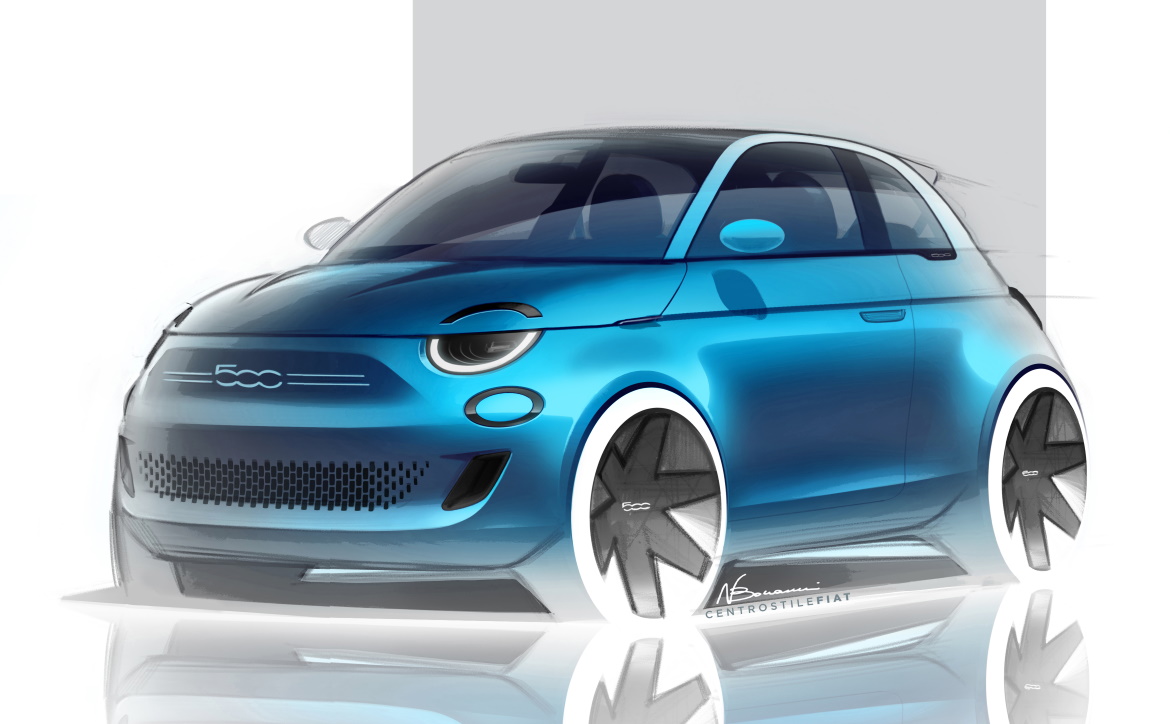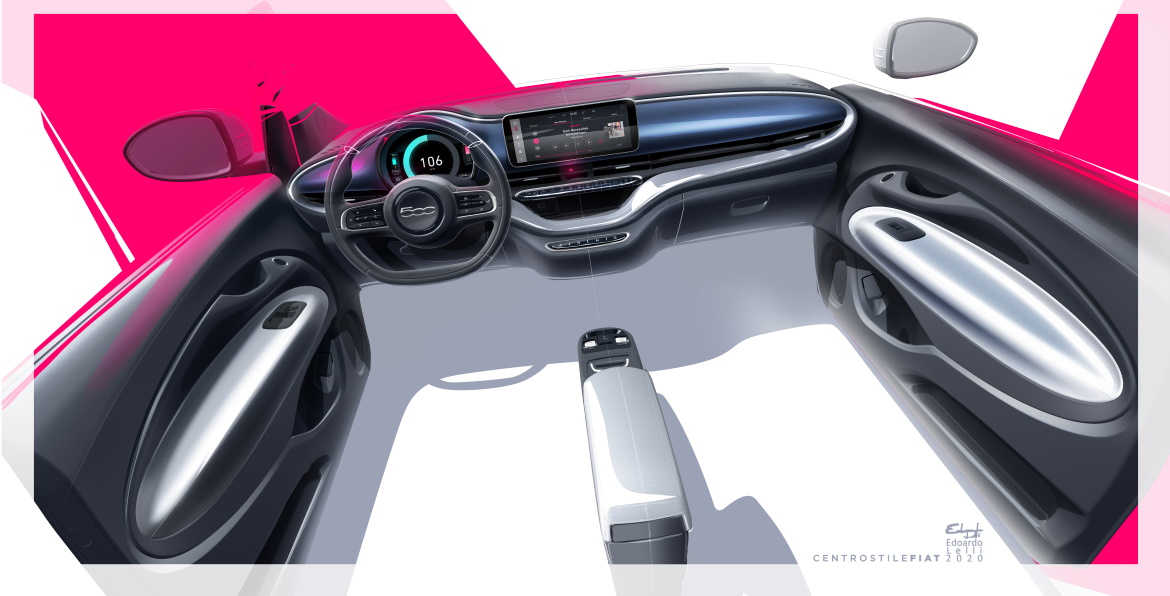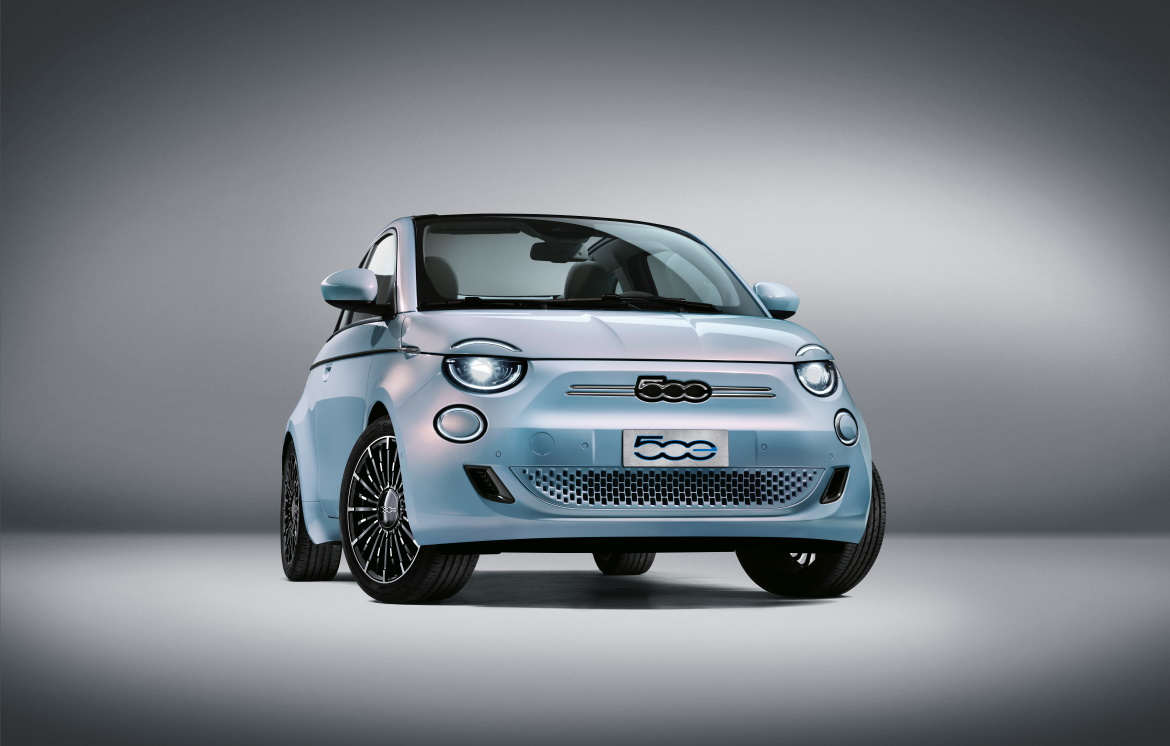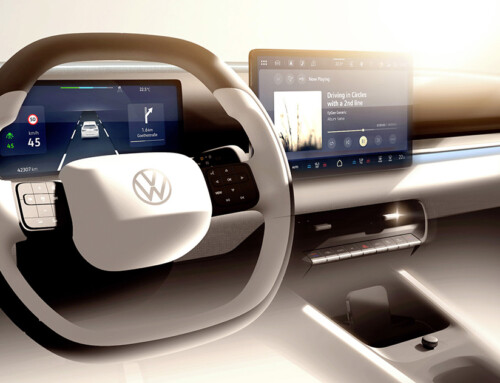Fiat presents in Milan the new electric 500, the first car of the Fca group with zero emissions. To imagine the future of the 500, the Turin-based brand has started from what has made it what it is today by reinventing a stylistic icon. On the design front, the electric 500 interprets the future of mobility while remaining faithful to previous generations. In the new 500 all the elements of style are simply more discreet, more sober, fresher. The front, vertical as in 1957, is less elusive, almost facing the road and the dynamic feeling of the side view has been accentuated.
The car, which can count on a 45 kilowatt hour battery pack for about 320 kilometres of range, has not been overturned, but has retained the same compact proportions and clean, angular design of the first generation designed by Roberto Giolito’s team. Classic, cool and strong with a 63-year history. In designing it, the Centro Stile Fiat has worked on the clean lines and the coherence of the formal language to define the lines of the electric model: essential, evolved, more sinuous and elegant although compact, shaped on the more proportionate setting of the new chassis. This makes the volumes appealing, giving the perception of increased stability and dimensional presence on the road.
The new model abandoned the Fiat logo, replacing it with a dedicated logo that took the car’s name, the 500: it was the first time this had happened since the iconic citycar made its debut on 4 July 1957. The official presentation of the car will be in Turin on 4 July. On the rear, the current 500 logo maintains its continuity with the past, transforming itself into a version dedicated to the electric: distinguished and embellished by a “Light Blue” outline, the last zero changes into an “E” with a play on design and colour.
Inside, the electric citycar is completely renewed with clear references to elements present in the first generation. The Centro Stile has furnished the interiors distributing the overall dimensions in an efficient way, in the name of formal simplicity, aesthetic cleanliness and visual clarity, as demonstrated by the wide and slender dashboard fascia and the creation of modular storage solutions between the two front seats, where the gearbox cabinet was previously located, to the advantage of an important perceived habitability. Dominating the dashboard is the large central floating display from which all the infotainment system functions can be controlled.















